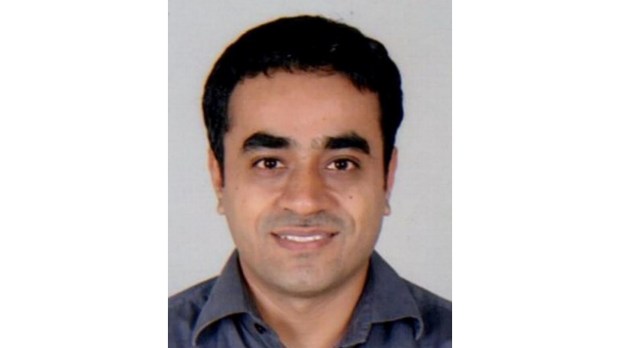BY: Sumit Ahuja
The Indian electric vehicle (EV) market is on the cusp of a significant transformation. According to the Economic Survey 2023, India is projected to experience a 49 percent compound annual growth rate (CAGR) between 2022 and 2030, with annual EV sales reaching 10 million EVs by 2030. This substantial growth is not only an environmental boon but also promises to generate around 50 million direct and indirect jobs by 2030. However, for a user to transform from an ICE vehicle to an EV, the transformation process has to be seamless, the convenience of charging electric vehicles must be a top priority.
As an EV owner in India, one cannot ignore the challenges when it comes to charging an electric vehicle. The lack of charging infrastructure is a significant concern. With the increasing adoption of EVs, there is a growing need for more charging stations. Standardization within the charging infrastructure is also a pressing issue. The absence of uniform technical standards makes it difficult for consumers to select optimal charging infrastructure, leading to increased costs and limited interoperability between network operators.

To address these challenges, India should consider the following key actions:
Formulation of Standard Protocols: Standard protocols for charging infrastructure should be established to ensure interoperability. This would allow EV users to charge their vehicles at any charging station, regardless of the operator.
Regulatory Frameworks: Streamlining regulatory frameworks can reduce installation costs and encourage the widespread adoption of EV chargers. This will promote a competitive market, ultimately benefiting consumers.
Transparent Charging Data: Providing transparent charging data to system operators is crucial to ensure the stability of the power network and minimize fluctuating energy costs.
Another significant hurdle is power outages and infrastructure deficiencies in India. These issues lead to electricity price fluctuations, long charging times, and potential reliability issues for charging station operators. To overcome these challenges, measures such as battery storage installation, power purchase agreements (PPAs) with local distribution companies, and strategic siting of charging stations can help ensure a steady supply of electricity.
Moreover, “range anxiety” remains a prominent concern among potential EV users. To mitigate this, India needs to continue improving EV ranges and battery technology. Education about the real-world usability of EVs and the practicality of owning one, even in a country with vast distances, is essential.
Charging Point Operators (CPOs) play a pivotal role in the development of the EV charging infrastructure. To ensure a seamless transition to electric vehicles, it’s crucial that CPOs adhere to the established standards. Standardization not only enhances interoperability but also simplifies the experience for users. A standard charging protocol, such as the Open Charge Point Protocol (OCPP), ensures that users can confidently rely on any charging station, regardless of the operator.
Moreover, CPOs need to consider the location of their charging stations carefully. Charging stations should be strategically placed based on user needs rather than on an ad-hoc basis. It’s unrealistic to have charging stations everywhere, especially in tier-3 and tier-4 cities where the adoption of electric vehicles may be relatively low. Understanding the specific needs of each location is essential to optimize the charging infrastructure. A tier-3 or a tier-4 city without a significant presence of electric vehicles may not require as many charging stations as a major urban center.
A noteworthy point to consider is the placement of slow chargers at traditional fuel stations. While fuel stations are designed for quick top-ups, the deployment of slow chargers may seem counterintuitive. Petrol or diesel refueling typically takes just a few minutes, but slow chargers can take anywhere from 60 – 180 minutes for a considerable top up of a vehicle. To better serve EV users, it makes more sense to install fast chargers at these locations. Fast chargers can significantly reduce charging times, aligning better with the convenience users expect when filling up their vehicles.
However, it’s essential to highlight that while progress is being made, not all charging stations are currently compliant with the prevailing standard charging protocol, the Open Charge Point Protocol (OCPP). Some chargers still may employ MQTT-based protocols that are not compatible with it. Standardization in this area remains a work in progress, but it is imperative for the industry to move toward widespread adoption of the OCPP to deliver a consistent and user-friendly experience to EV owners.
The adoption of Indian standards for fast charging, like DC001 and CCS, has been a positive step. The recent approval of the IS17017 standard for combined AC and DC charging connectors by the BIS (Bureau of Indian Standards) is a significant achievement, helping create an open ecosystem for EV adoption in India and potentially globally.
For a smooth transition, technology providers play a crucial role. Charging stations should be strategically placed in malls, office spaces, and residential areas. Pre-booking options and user-friendly interfaces should be provided to ensure that users have a seamless experience.
Charger Original Equipment Manufacturers (OEMs) also have a role to play. “Smart” chargers should indeed live up to their name, offering multiple communication methods like SIM, LAN, BLE, and WiFi. This ensures that chargers remain accessible and operable even in areas with poor network connectivity. Furthermore, chargers should provide more control to users, allowing them to set preferences and control charging costs.
In conclusion, the growth of the EV market in India is an exciting prospect, offering environmental benefits and significant job creation. However, to facilitate this transition smoothly, addressing the challenges associated with charging infrastructure is paramount. Standardization, regulatory support, reliability, and convenience for users should be at the forefront of this transformative journey. With the right strategies and collaborations, India can lead the way in making EVs the preferred mode of transportation.
The author is the Founder and Director (Strategy, Innovation, Technology) at ElectreeFi
Disclaimer: The views and opinions expressed in this article are solely those of the original author. These views and opinions do not represent those of The Indian Express Group or its employees.



















